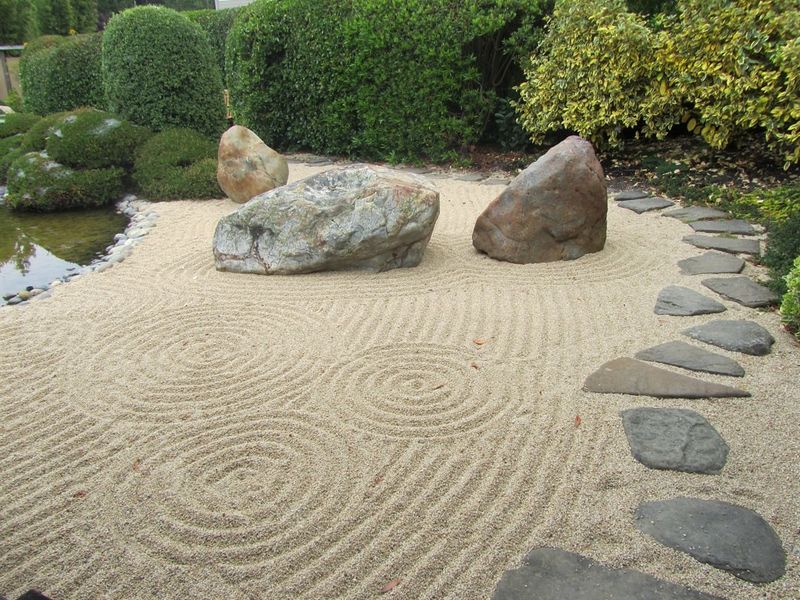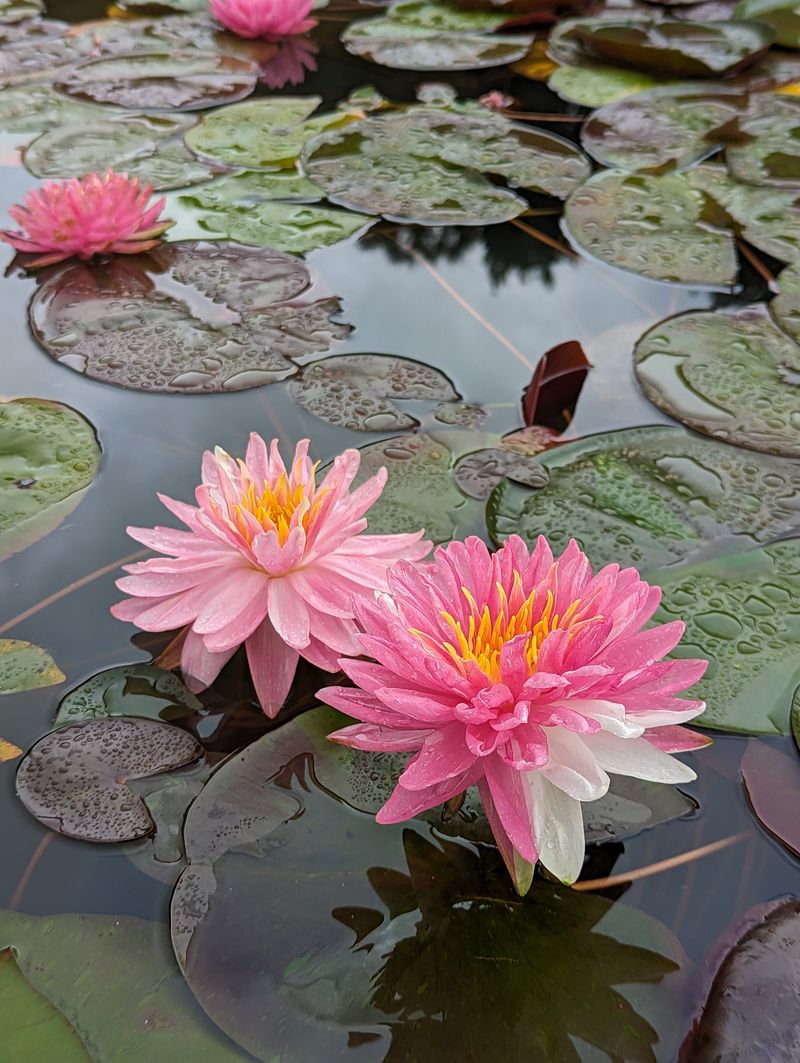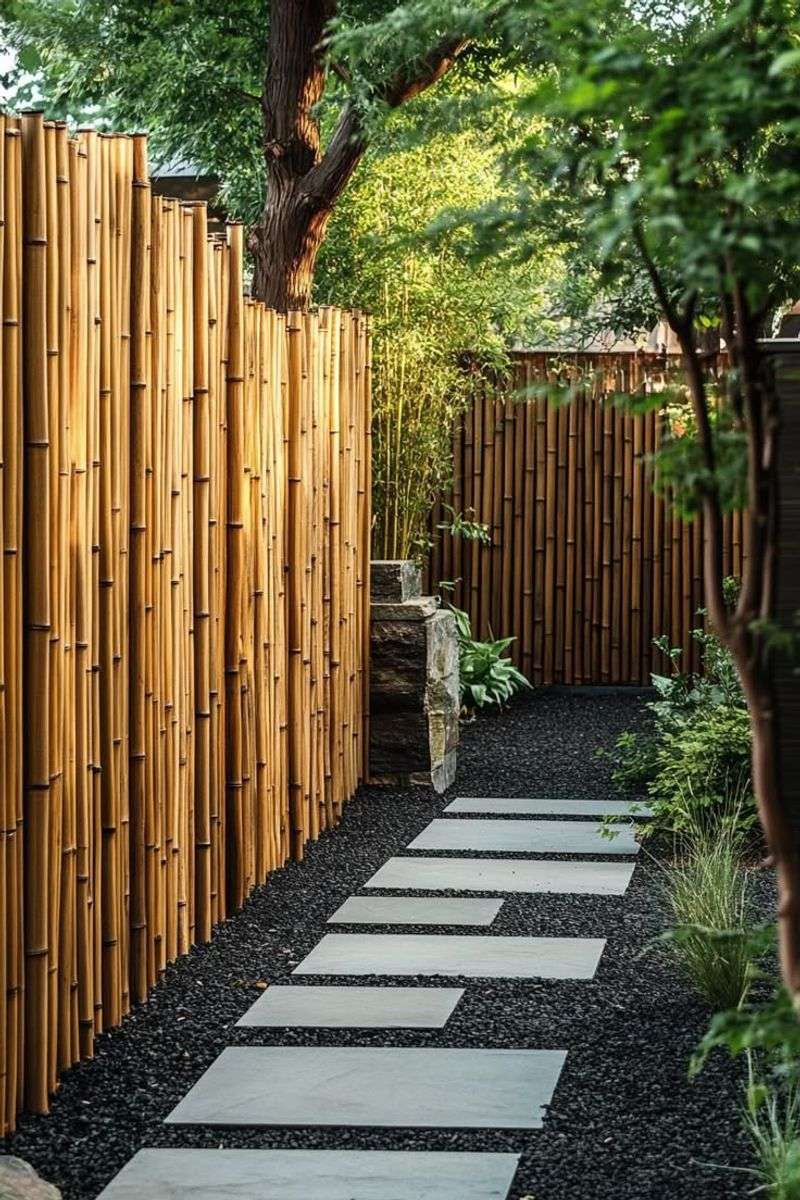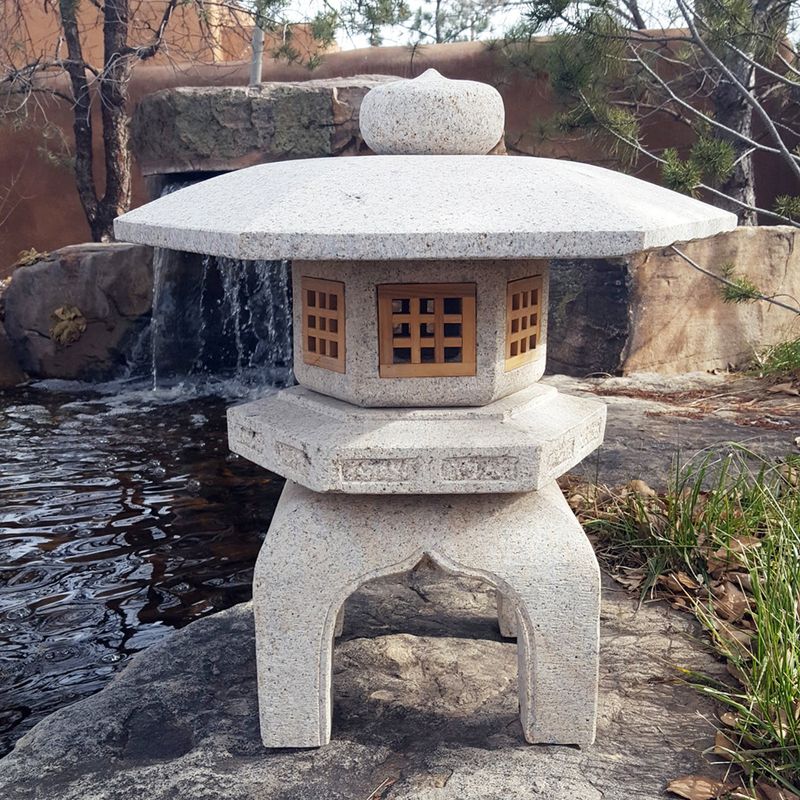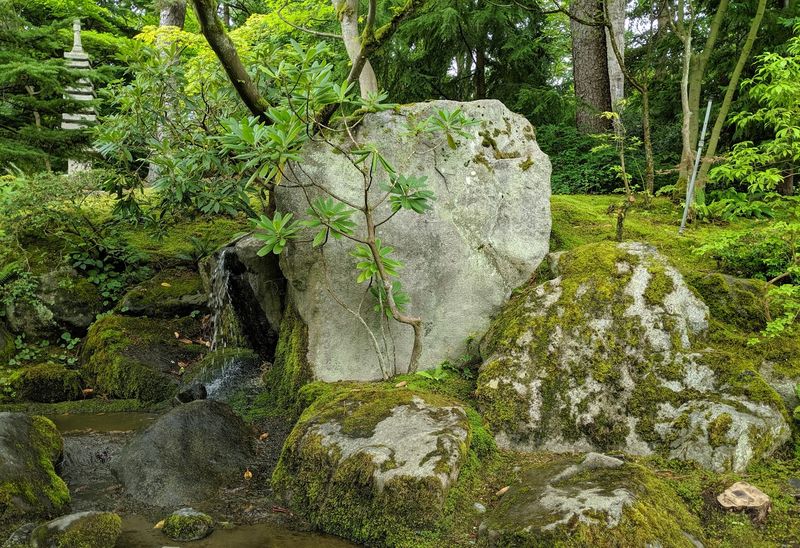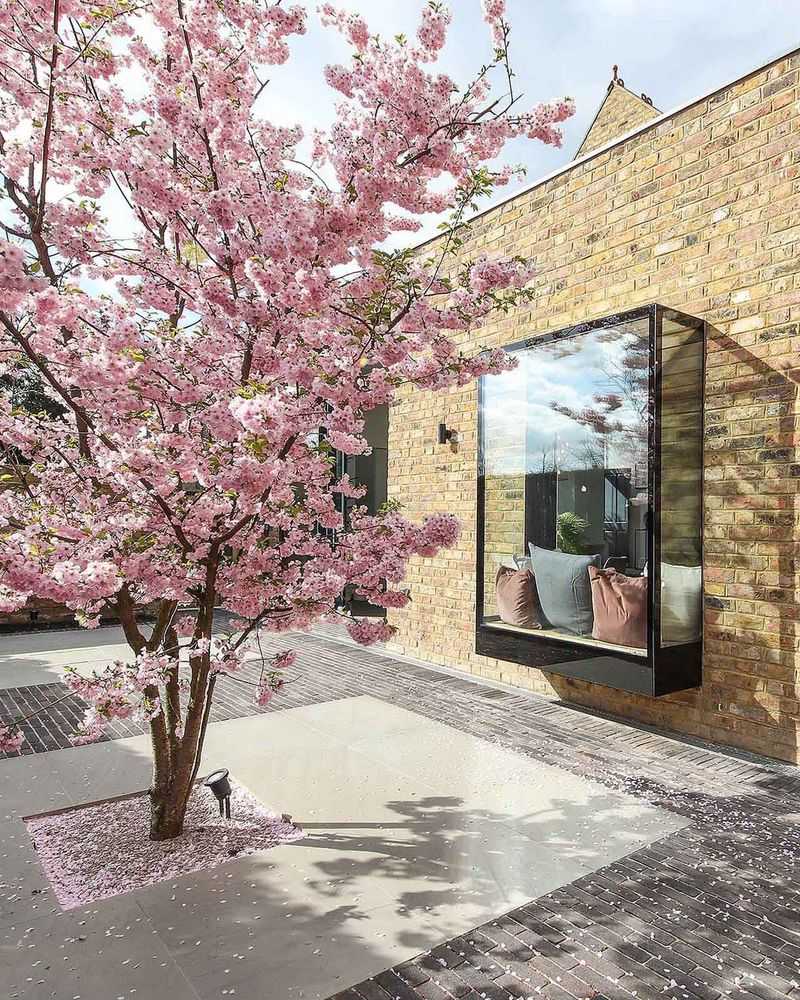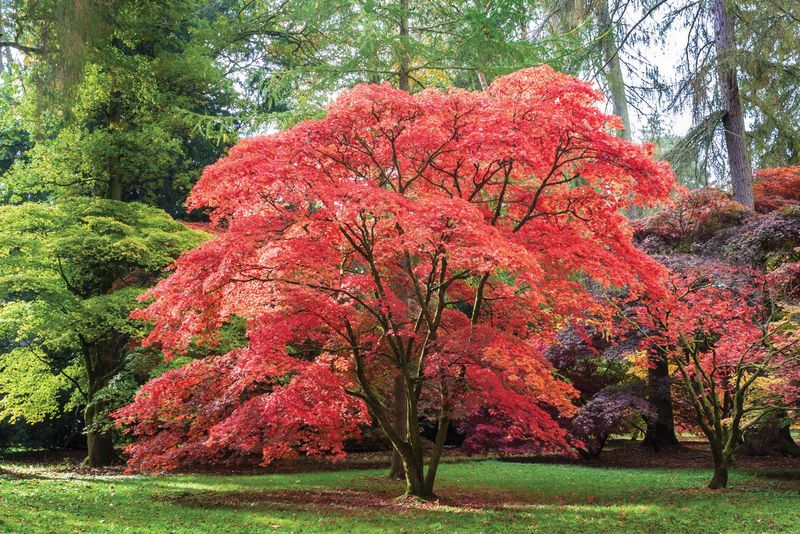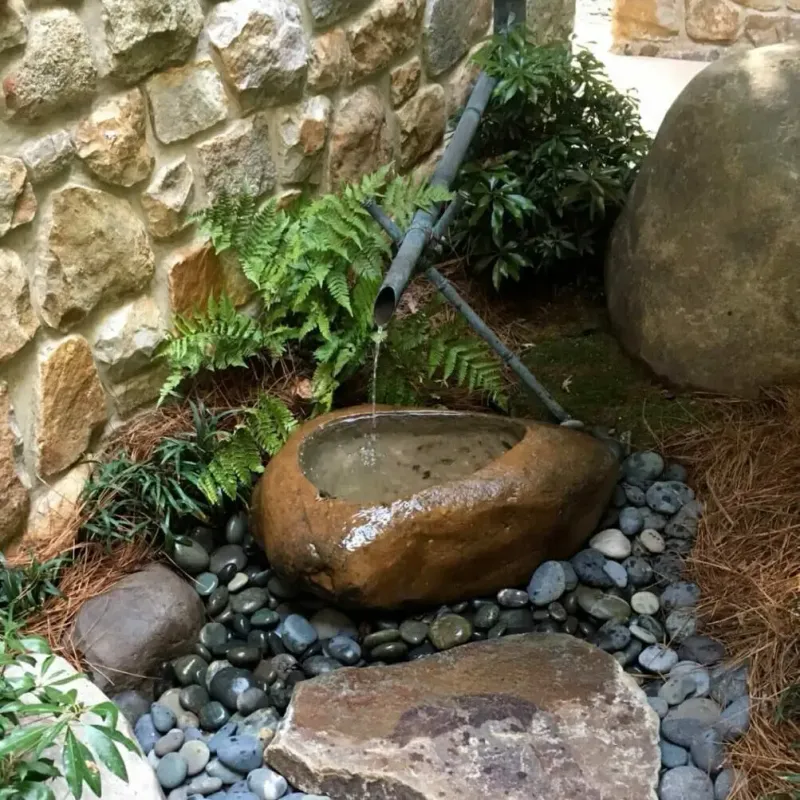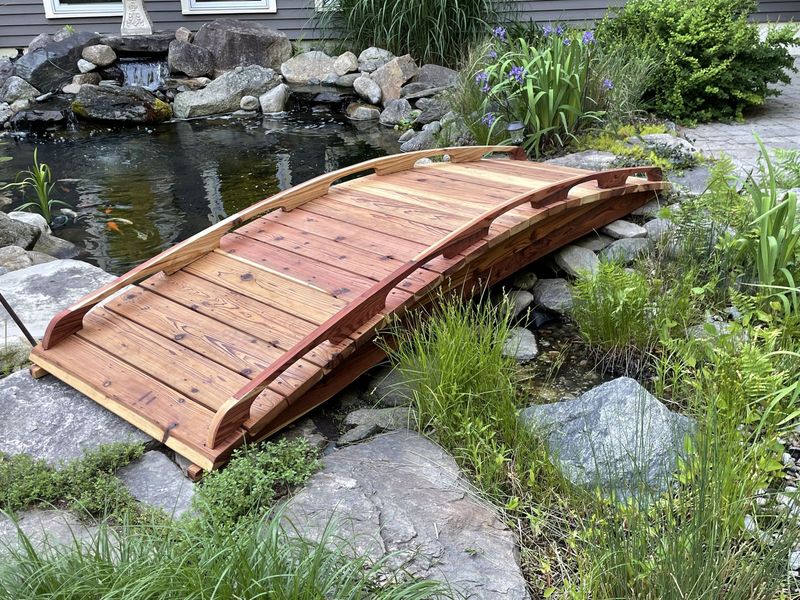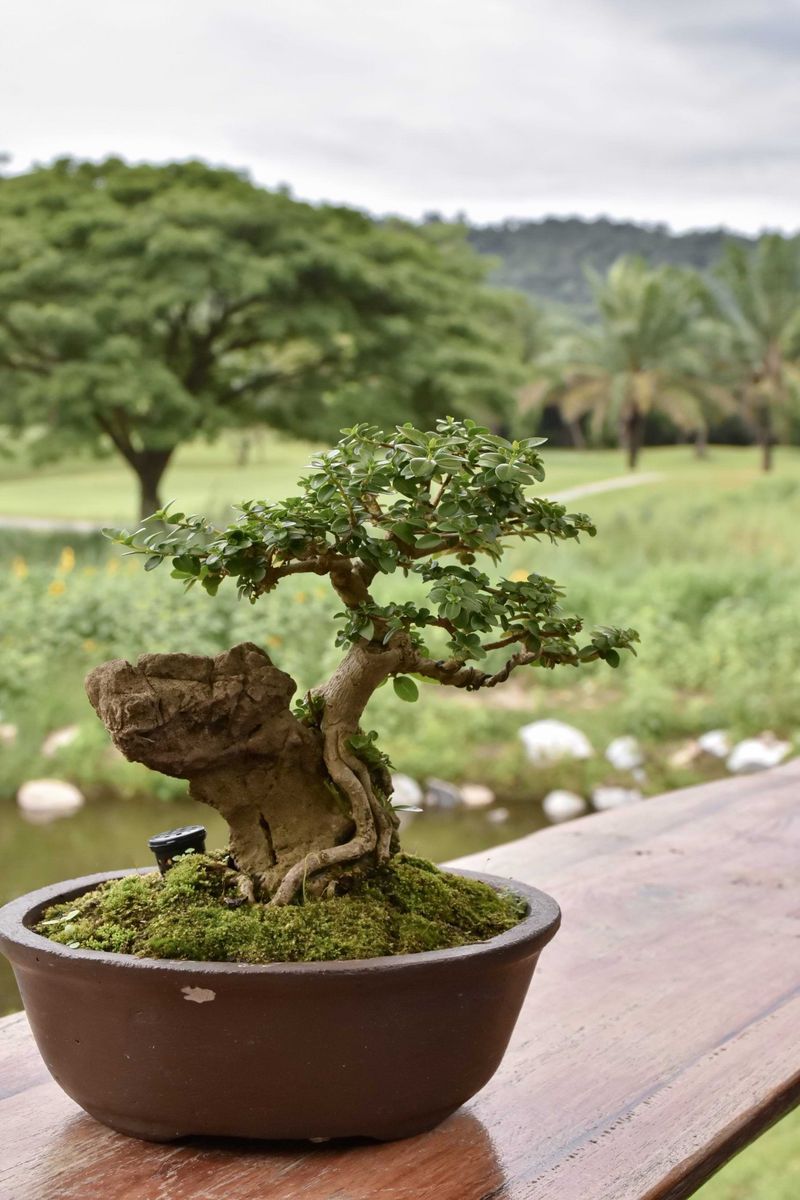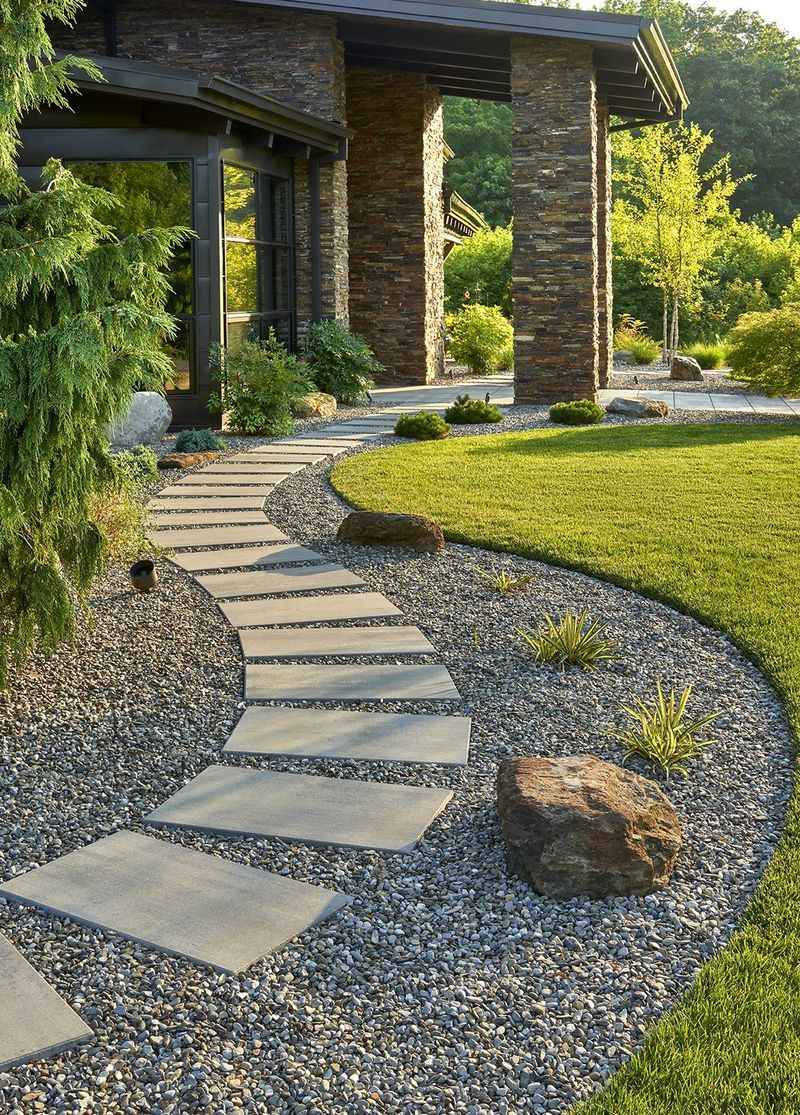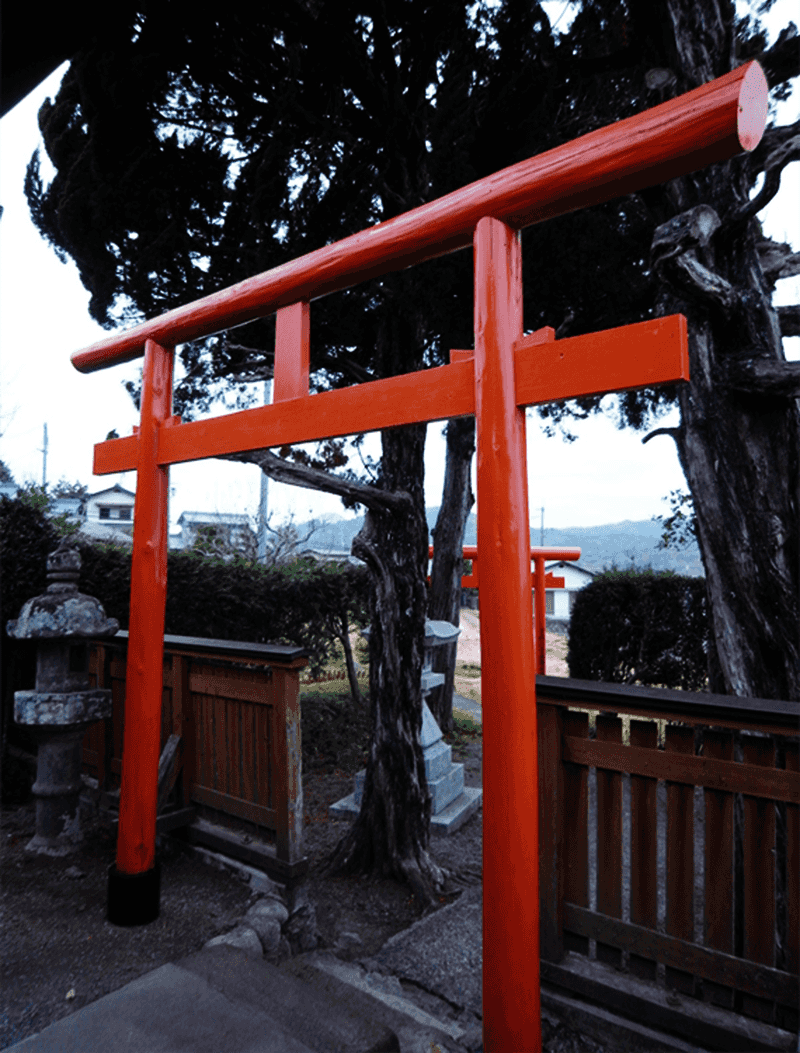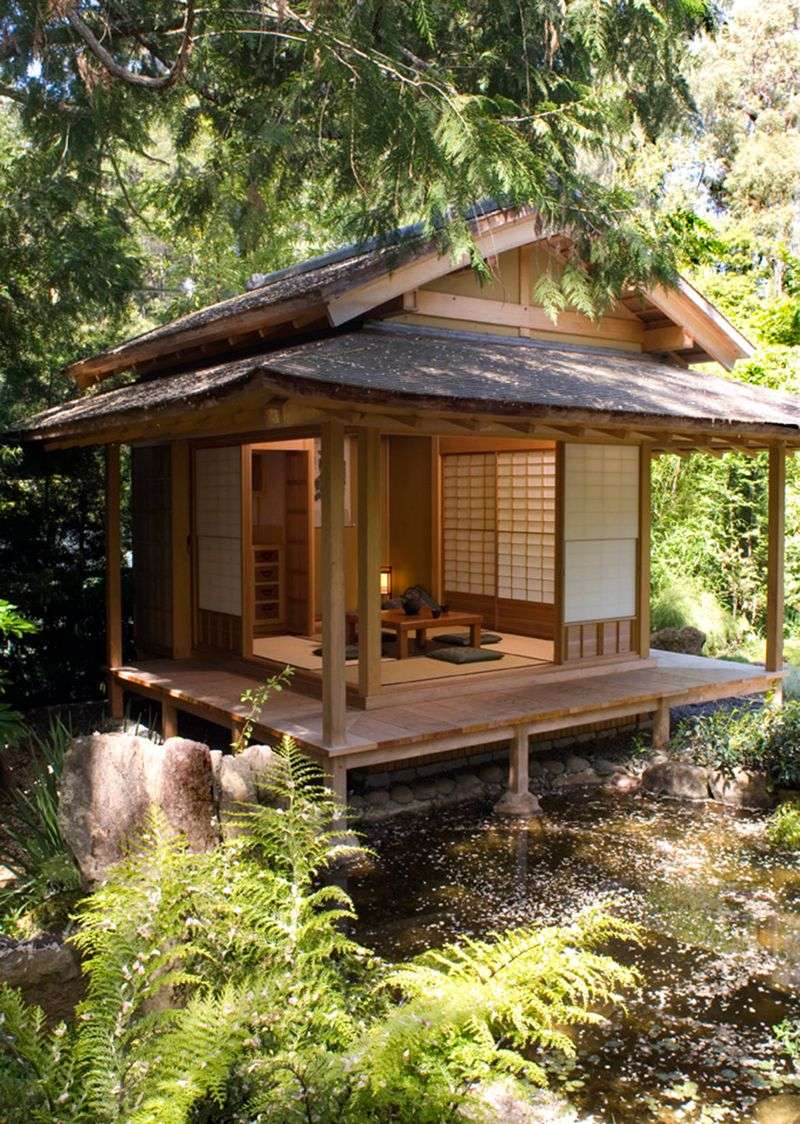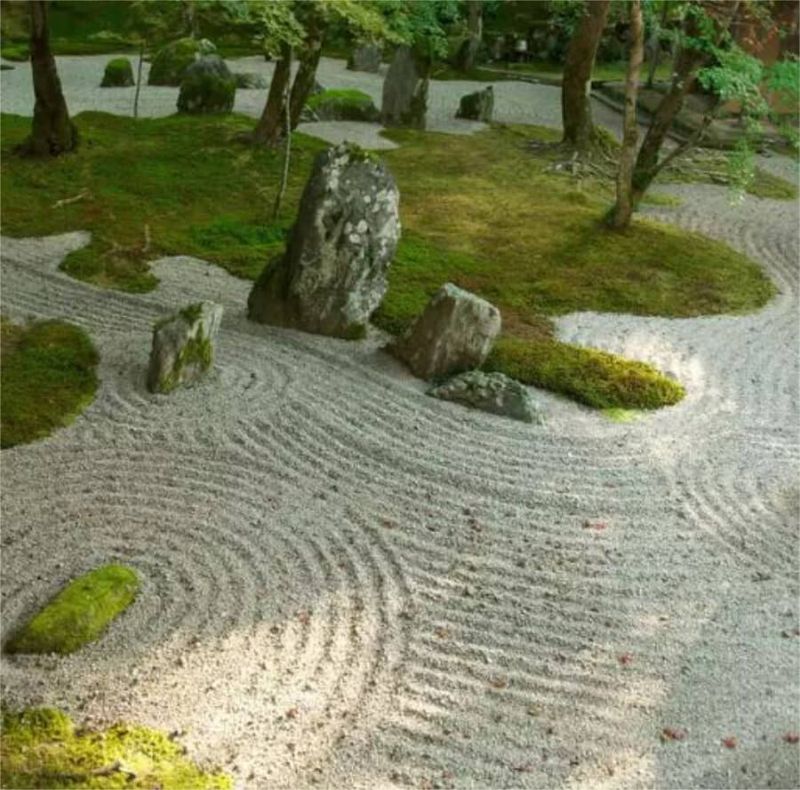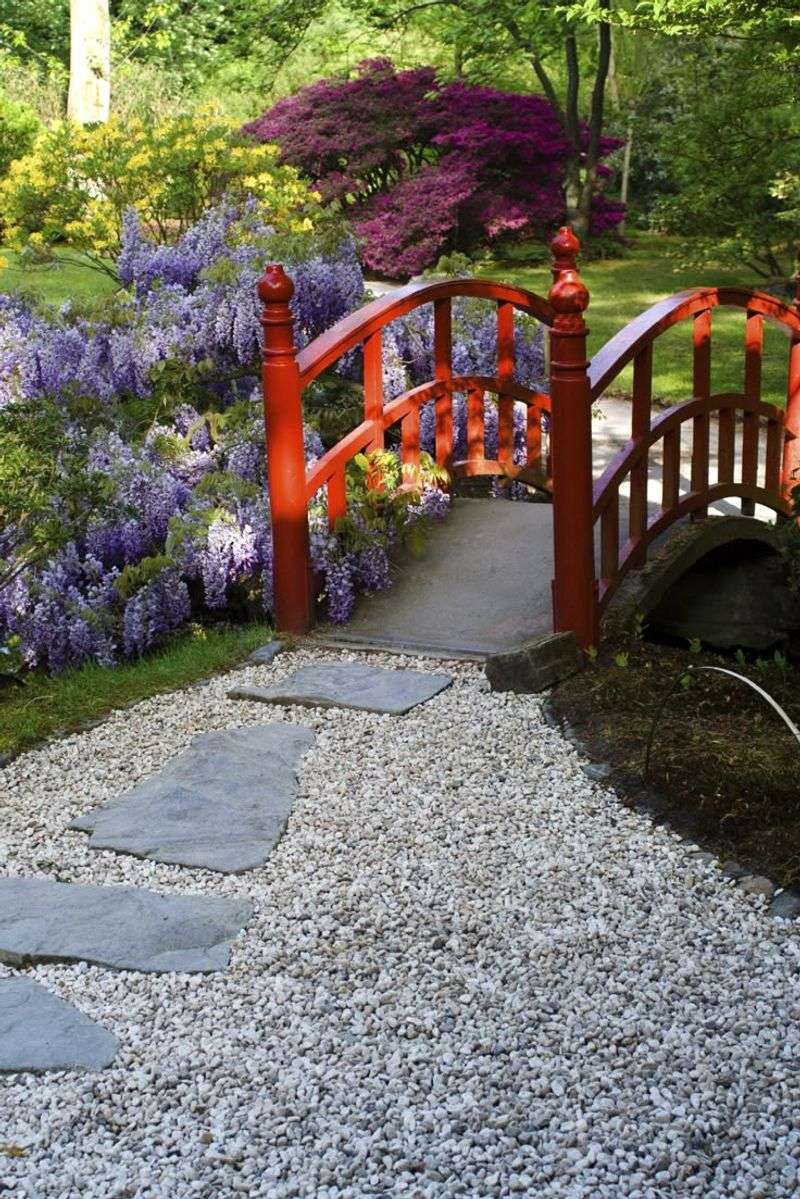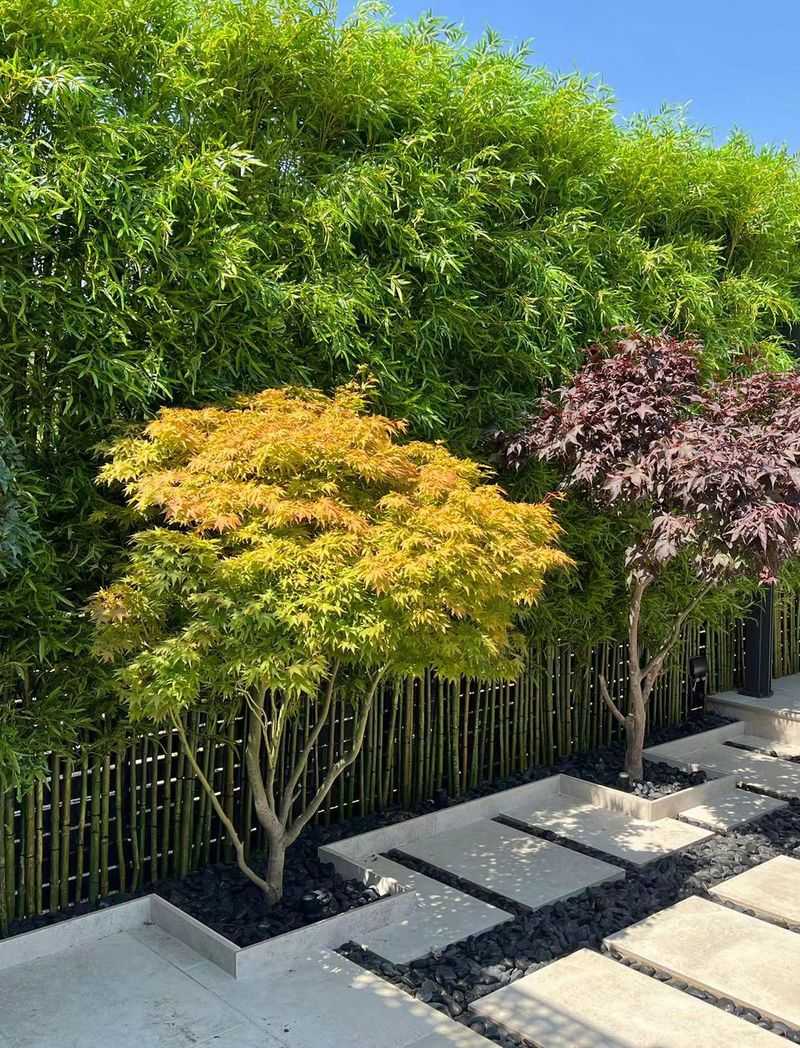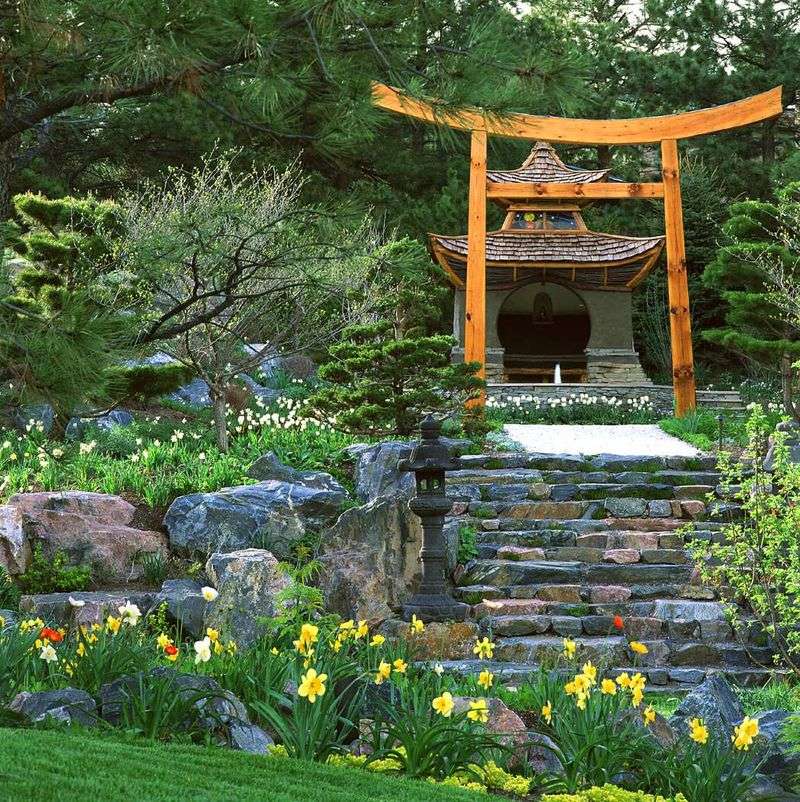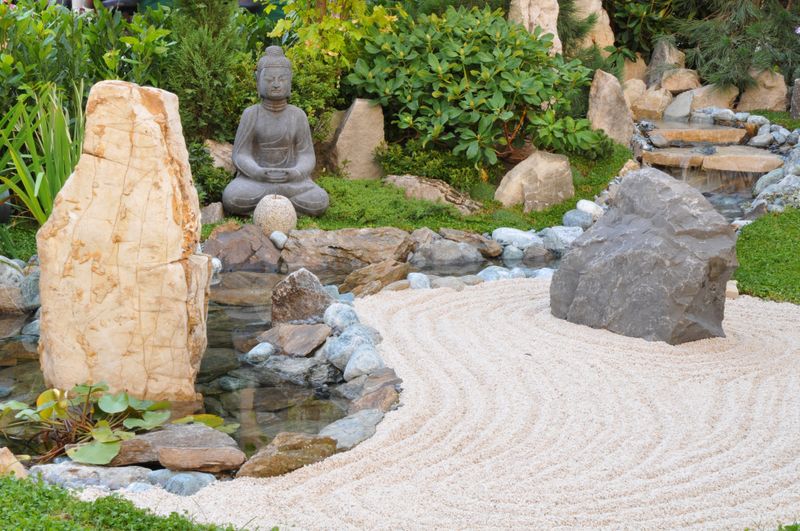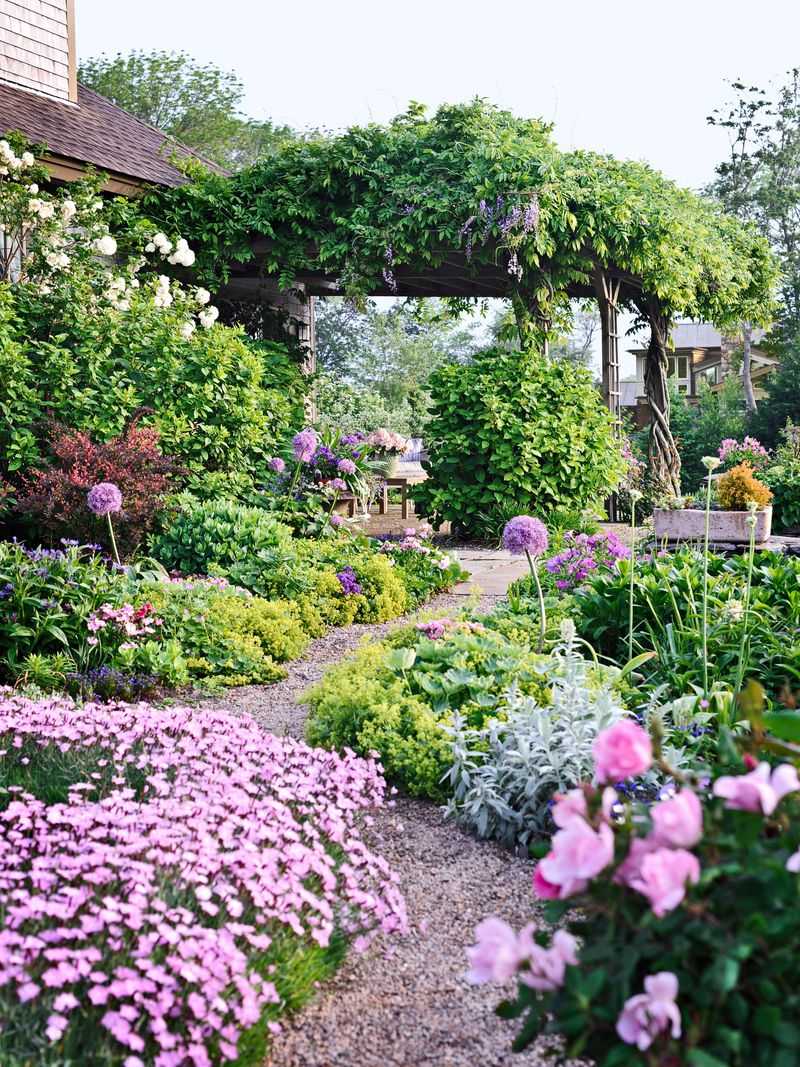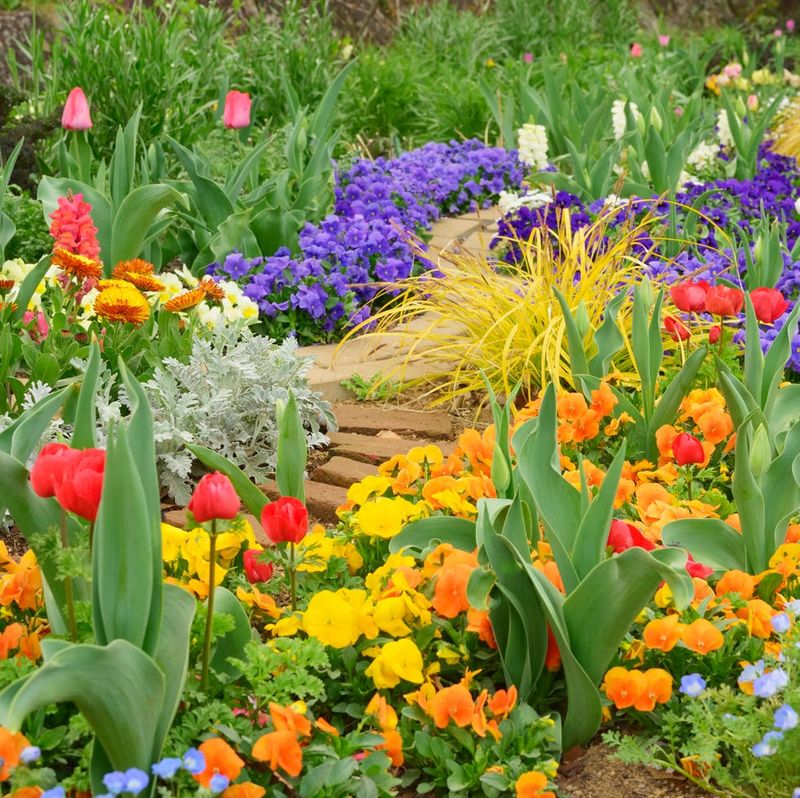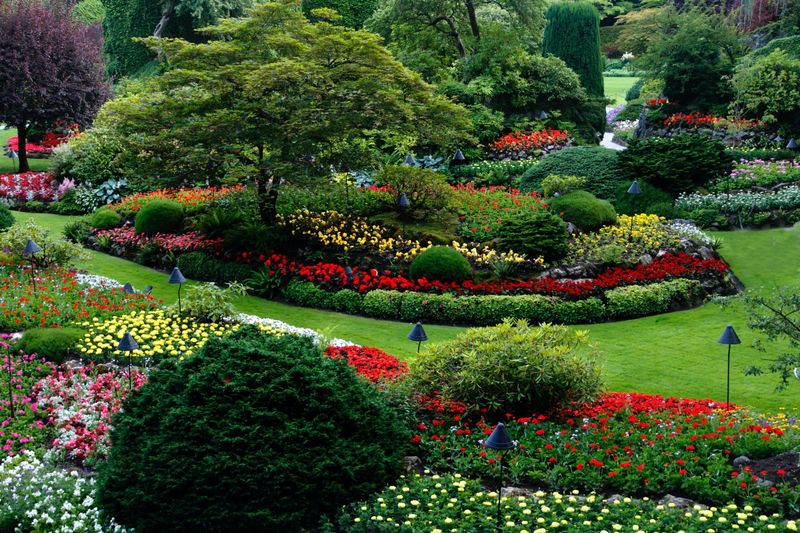Designing a Japanese garden feels like creating your own little masterpiece. A peaceful, living work of art. It’s all about balance, simplicity, and letting nature shine.
After diving deep into the art of Japanese gardens (and nearly overthinking the placement of every stone), I’ve pulled together key elements to consider.
It’s a mix of tradition and a little bit of my own creative twist. From koi ponds to bamboo fences, each detail plays a role in creating your tranquil escape.
1. Zen garden with raked gravel
Raking gravel isn’t just busywork. It’s therapeutic. Picture a tranquil setting where the gravel mirrors the ripples of a calm pond. This Zen garden element invites peace and contemplation.
The simplicity of gravel, when raked with care, transforms into mesmerizing patterns. It’s like painting with sand, a lesson in patience and precision.
Every stroke has its place, and every ripple tells a story of serenity. Watch how the light plays with the textures, bringing the garden to life in a cool, understated way.
2. Koi pond with water lilies
Beneath the surface, koi fish glide gracefully, adding elegance and movement. Water lilies float on the surface, their broad leaves providing shade and their blossoms a splash of color.
This pond becomes a focal point, attracting life and offering meditative calmness. As the fish dart and lilies bloom, the pond’s gentle sounds echo tranquility.
It’s a dynamic yet peaceful hub, constantly changing yet consistently calming, inviting reflection and peace.
3. Bamboo fence for privacy
Privacy doesn’t have to scream “stay away”; it can whisper “come closer.” The bamboo fence offers a natural divider, defining spaces with grace.
Tall and slender, bamboo stands guard with a quiet elegance. Its strength is as astonishing as its simplicity, creating an intimate atmosphere without feeling closed-off.
As the wind rustles through the stalks, a soft symphony plays, enhancing the garden’s sense of seclusion. This fence is a classy way to blend security with nature, keeping the space open yet personal.
4. Stone lanterns along paths
Stone lanterns guide the way with soft illumination. At dusk, they come alive, casting gentle shadows that dance on the paths. These lanterns are not just functional. They’re works of art, each telling a story of craftsmanship.
Their presence is both grounding and uplifting, making every evening stroll feel like a journey through history. They illuminate not just the path, but the garden’s soul, adding depth and intrigue.
5. Moss-covered rocks and stones
Covered in moss, they whisper tales of time and transformation. The moss adds a cool touch, bringing texture and life to the stones.
It’s an interplay of hard and soft, old and new. These stones become anchors in the garden, linking past and present. As the moss shifts with the seasons, it reflects nature’s ongoing dance.
It’s a subtle reminder of nature’s resilience and beauty, providing a wild feeling in a curated space.
6. Cherry blossom trees
Cherry blossoms create an annual spectacle. Their petals, delicate and soft, paint the garden in shades of pink and white.
It’s a festival of color and life, albeit ephemeral. As the blossoms fall, they carpet the ground, creating a breathtaking moment in time.
This tree reminds us of life’s impermanence and beauty, a cool metaphor wrapped in petals. Each bloom is a promise and a farewell, leaving a lasting impression of elegance.
7. Japanese maple trees
Leaves aren’t just green. They’re a painter’s palette. Japanese maples display an array of colors, from fiery reds to deep purples, transforming the garden with their fancy hues.
Their leaves, delicate and intricately shaped, capture the light in fascinating ways. As the seasons change, so does their attire, offering a dynamic display of nature’s artistry.
These trees stand as noble sentinels, their colors a testament to the garden’s evolving narrative. They’re not just trees; they’re living sculptures, adding depth and dimension.
8. Water cascades with rocks
Cascading water brings movement and sound, adding a dynamic element to the garden. As it tumbles over rocks, it creates a symphony of soothing sounds, a lullaby of nature.
The water’s journey, from stone to stone, adds layers of intrigue and visual interest. It’s a dance of motion and stillness, where each drop plays its part.
This cascade isn’t just a feature. It’s an experience, inviting interaction and contemplation. Engage with its cool, refreshing energy, and let it enchant you.
9. Simple wooden bridges
A simple wooden bridge links different parts of the garden. It’s an invitation to explore, to traverse the boundaries between here and there.
The wood, warm and inviting, contrasts with the cool water below, creating a harmonious balance. As you step onto the bridge, you’re transported, not just from one side to another, but into the garden’s embrace.
It’s a path of discovery, a journey made memorable by the quiet elegance of its design.
10. Bonsai trees in containers
Bonsai trees, in miniature form, encapsulate the essence of their larger counterparts. These tiny giants, carefully pruned and shaped, represent nature’s tenacity and artistry.
In their containers, they stand as symbols of patience and creativity. Each bonsai is a testament to the gardener’s skill and vision, a living sculpture that evolves over time.
It’s a relationship between nature and nurture, where every leaf and branch tells a story. These trees, though small, hold immense presence and charm.
11. Gravel pathways with stepping stones
Gravel pathways, punctuated by stepping stones, guide the visitor through the garden’s story. Each step is deliberate, inviting mindfulness and a slower pace.
The crunch of gravel underfoot is a soundtrack of serenity, grounding the journey. Stepping stones add rhythm and structure, their placement thoughtful and purposeful.
These paths aren’t just about getting from point A to B. They’re about the journey in between. They invite exploration and reflection, making every visit a unique experience.
12. Shinto shrine-inspired structures
A shrine-inspired structure evokes a sense of tradition and spirituality. Nestled within the garden, it serves as a focal point and a place of reflection.
The architecture blends seamlessly with nature, its simplicity echoing the garden’s themes. This structure isn’t just about aesthetics. It’s about connection to cultural heritage.
It becomes a sanctuary within the garden, inviting contemplation and peace. Its presence is subtle yet profound, a cool reminder of the garden’s deeper meanings and histories.
13. Miniature Japanese tea house
A miniature Japanese tea house offers a glimpse into this tradition, inviting participation in the ritual of tea. Set in the garden, it becomes a destination, a place to pause and appreciate the moment.
The simplicity of its design belies the richness of the experience it offers. This tiny retreat is a doorway to tranquility, a chance to engage with the garden in a meaningful, deliberate way.
14. Sand and stone arrangement
In a Japanese garden, sand and stones combine to create abstract art. The arrangement reflects the balance and harmony of nature, with each stone placed with purpose.
The sand, raked into patterns, adds texture and depth, inviting interpretation. This element is a study in contrasts. Hard and soft, static and fluid.
It’s a space for contemplation, where simplicity meets complexity. Engage with its cool, calm presence, and let your imagination wander among the shapes and lines.
15. Lanterns along water features
Positioned along water features, they reflect and amplify the garden’s beauty. As night falls, these lanterns cast a warm glow, their light dancing on the water’s surface.
They transform the setting, creating a mysterious, enchanting atmosphere. Each lantern is a work of art, its design rooted in tradition. Their presence invites exploration and interaction, adding layers of charm.
These lights are not mere illuminations. They are invitations to discover the garden’s secrets under the cover of night.
16. Bridge over a small stream
A bridge over a small stream creates a connection, both physical and metaphorical. It’s an opportunity to pause and appreciate the flowing water beneath.
The bridge, crafted with care, complements the natural setting, a testament to human ingenuity and nature’s harmony. As you cross, there’s a sense of transition, a movement from one space to another.
This bridge isn’t just a crossing. It’s an invitation to linger, to listen to the stream’s song, to engage with the garden’s soul.
17. Tall bamboo clusters
Bamboo isn’t just tall. It’s tenacious. Clusters of towering bamboo create a living curtain, a cool blend of strength and flexibility.
As the wind sweeps through, the bamboo whispers a soothing melody, a testament to nature’s resilience. This plant’s rapid growth and slender elegance make it a striking feature in any garden.
It’s a natural divider, providing privacy and intrigue. These clusters invite not just visual interest but a tactile engagement, encouraging visitors to feel the smooth stalks and listen to their gentle rustle.
18. Peaceful koi fish pool
Pools aren’t just reflections. They’re sanctuaries. A koi fish pool transforms a garden into a living, breathing ecosystem.
The fish, with their bright colors, add movement to the still waters. This pool becomes a centerpiece, a source of fascination and tranquility.
Watching the koi swim is a meditative experience, a dance of color and grace. It’s a place to pause, to reflect as the fish glide silently beneath the surface.
19. Garden with rolling hills
In a Japanese garden, rolling hills create depth and perspective, transforming the space into a three-dimensional work of art.
These gentle undulations mimic nature’s contours, inviting exploration and engagement. Walking through, there’s a sense of discovery, as each hill reveals new views and hidden treasures.
This element is about experience, a journey through the garden’s varied terrain. The hills add a dynamic element, making the garden feel expansive and alive.
20. Tranquil meditation corner
A tranquil meditation corner provides a sanctuary within the garden, a place to find peace and reflection. Nestled among lush foliage, this corner invites solitude and mindfulness.
It’s a deliberately designed area, focusing on simplicity and calm. The seating is comfortable, encouraging stillness and contemplation.
This is an experience, a chance to disconnect from the outside world and connect with the garden’s essence. It’s a personal oasis, offering a moment of respite and renewal.
21. Overcrowding with plants
More isn’t always better, especially in a garden. Overcrowding plants can lead to competition for resources, stifling growth and harmony.
A careful balance is needed to ensure each plant has enough space to flourish. This mistake can turn a serene garden into a chaotic jungle, losing the essence of simplicity and peace.
It’s a reminder that sometimes, restraint brings the most beauty. Avoid the temptation to overfill, and let each plant breathe and shine.
22. Using bright or unnatural colors
In a Japanese garden, subtlety speaks volumes. Bright or unnatural colors can disrupt the calm and thoughtful atmosphere, becoming visual noise.
The garden’s palette should reflect nature’s own, with muted tones that blend seamlessly into the environment. Choosing the right colors is crucial to maintaining harmony and balance.
It’s about enhancing, not overshadowing, the garden’s natural beauty. Let nature’s hues guide the way, keeping the scene gentle and serene.
23. Ignoring seasonal interest
Ignoring seasonal interest can leave a garden feeling stagnant and lifeless. A successful garden embraces change, using plants that offer diverse colors and textures throughout the year.
This dynamic approach keeps the garden engaging and alive, a celebration of nature’s cyclical beauty.
Planning for each season ensures that the garden remains an evolving masterpiece, with something new to offer in every phase. Embrace change, and let the garden’s story unfold.
24. Adding too many ornaments
Adding too many can clutter a garden, overshadowing its natural elegance. In a Japanese garden, simplicity is key; each ornament should enhance, not compete with the surroundings.
The focus should remain on the harmony and balance of nature. Choosing fewer, meaningful pieces creates a more impactful and serene environment.
It’s about quality over quantity, allowing the garden’s natural charm to shine through without distraction. Less truly is more when it comes to decor.
25. Overcomplicating the design
Overcomplicating a garden’s design can lead to chaos and confusion, detracting from its meditative quality.
A Japanese garden thrives on simplicity and thoughtful placement, where each element has a purpose. Keeping the design clean and minimal allows the garden’s natural beauty to take center stage.
It’s about creating an experience, not a spectacle. Streamline your vision, and let the garden breathe, embracing the elegance of simplicity and balance.


